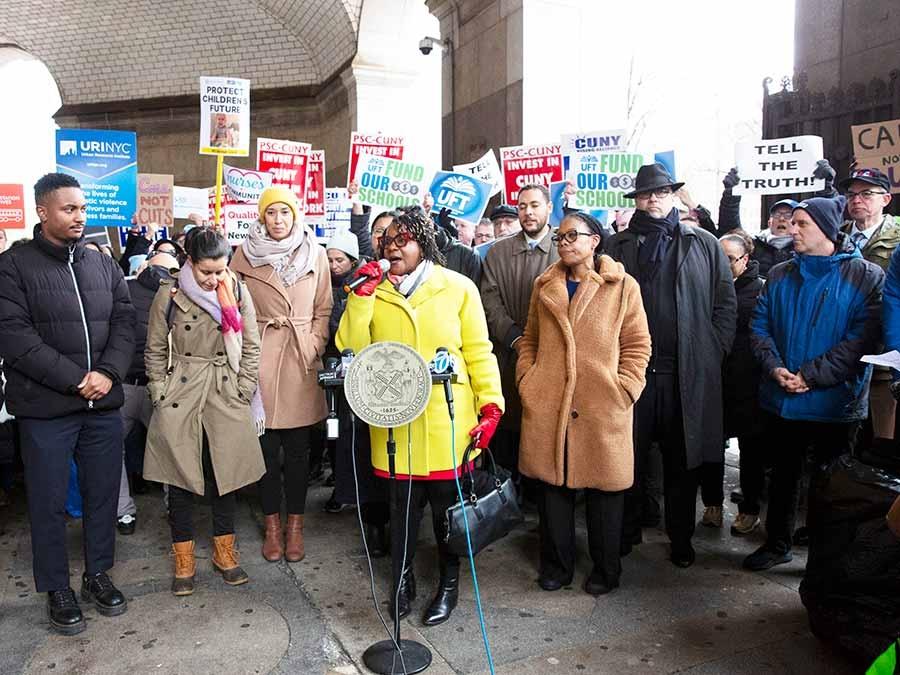‘Not the time for budget cuts’

UFT Vice President Janella Hinds speaks out at a City Hall press conference before a City Council budget hearing on Dec. 11. “From pre-K until 12th grade, our students need care in the classroom, not cuts,” she said.
In a terrible blow to New York City public schools still recovering from the COVID-19 pandemic, Mayor Eric Adams plans to make three successive 5% cuts to education funding between December and June.
To absorb the first 5% cut, the city Department of Education will reduce funding for after-school programs, per session work, substitutes, 3-K and pre-K and community schools, among other things. The hours, days and ages for next year’s Summer Rising program will be reduced, too. To save $286 million, funded DOE positions that are currently vacant will be eliminated.
The mayor has asked the DOE to prepare a plan for another round of 5% budget cuts in January, and yet another 5% reduction before the fiscal year ends on June 30.
More than 4,000 UFT members and parents have sent emails to their Council members asking them to intervene to stop the cuts. So far, the City Council has failed to act.
UFT President Michael Mulgrew said the mayor’s cuts were unnecessary and unacceptable. “They are driven by City Hall’s false political narrative that New York City is about to fall off a fiscal cliff,” he said. “Revenues are, in fact, higher than expected, investment from Albany is up and reserves are at a near-record high.”
The city’s reserves remain at $8 billion, slightly less than the $8.3 billion record set in June 2022. Personal income tax collections are higher than projected this fiscal year. And the city currently has a budget surplus of $643 million.
Yet the mayor said he needed to free up billions of dollars in the coming years to provide housing and other services to the asylum-seeking families who have arrived in New York City.
Mulgrew said that rationale was contrived. “The influx of asylum seekers has cost the city money, but the mayor has exploited that issue to vastly inflate city expenses for the next four years,” he said.
These cuts come on the heels of the mayor and Schools Chancellor David Banks touting a 1% increase in student enrollment — some 8,000 students — for a total enrollment of about 915,000, according to preliminary data. School enrollment had declined for eight years before turning around this school year.
“Families are returning to our public schools — now is not the time to cut funding to our school communities or to reduce services for our students,” Mulgrew said.
Mulgrew said the budget cuts will also harm the historic push to reduce class sizes in the city. “At a time when Albany has sent more money to New York City and has sought to correct a decades-long inequity by passing a law to lower New York City class sizes, City Hall is undermining that work by reducing support to students, educators and school communities,” he said.
In addition to the three 5% cuts to education funding, City Hall plans to claw back $109 million from schools where enrollment is less than was projected in July. It is the first time since 2019 that schools have not been held harmless for enrollment drops. Forty-three percent of city public schools — 653 in all — will lose funding as a result.
The remainder of the schools, including those that took in children from asylum-seeking families, are expected to receive a total of $183 million due to higher-than-anticipated enrollment.